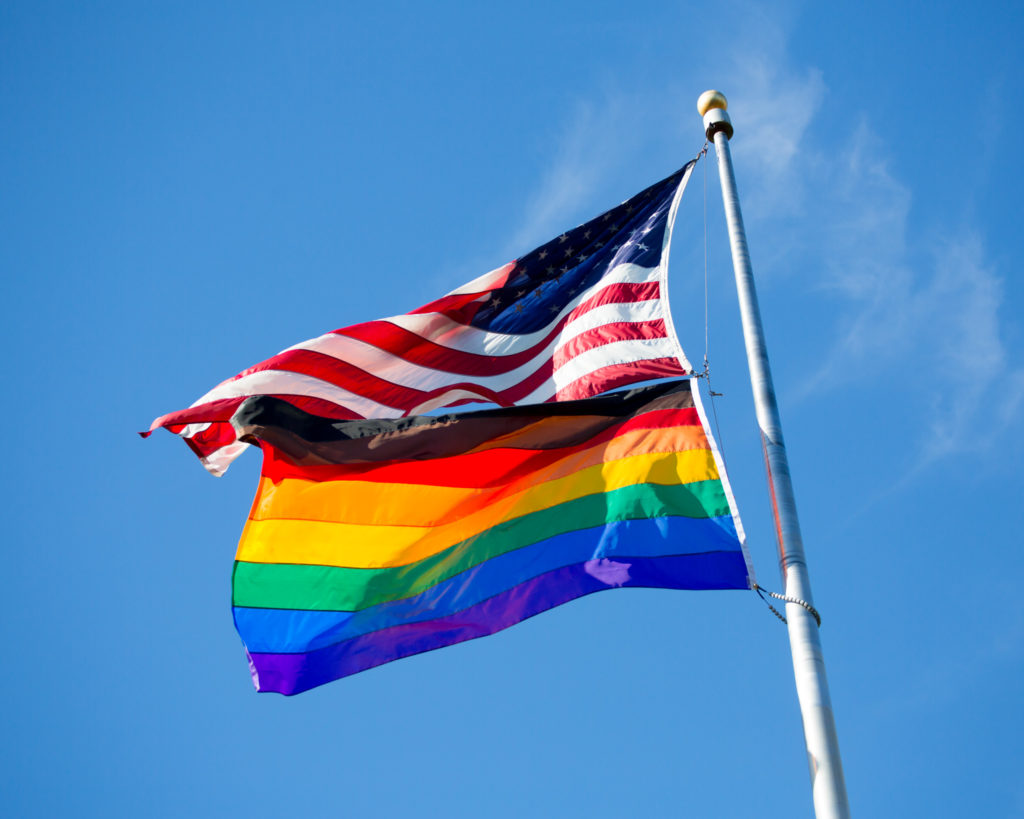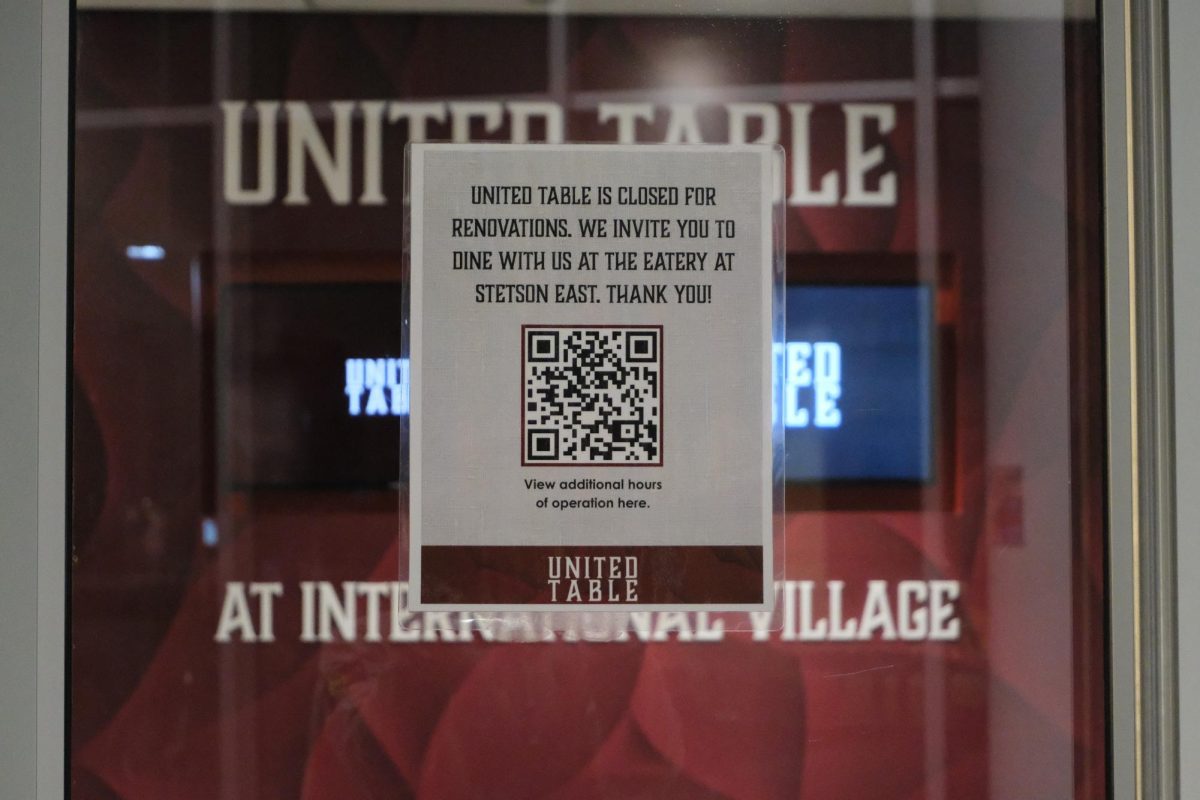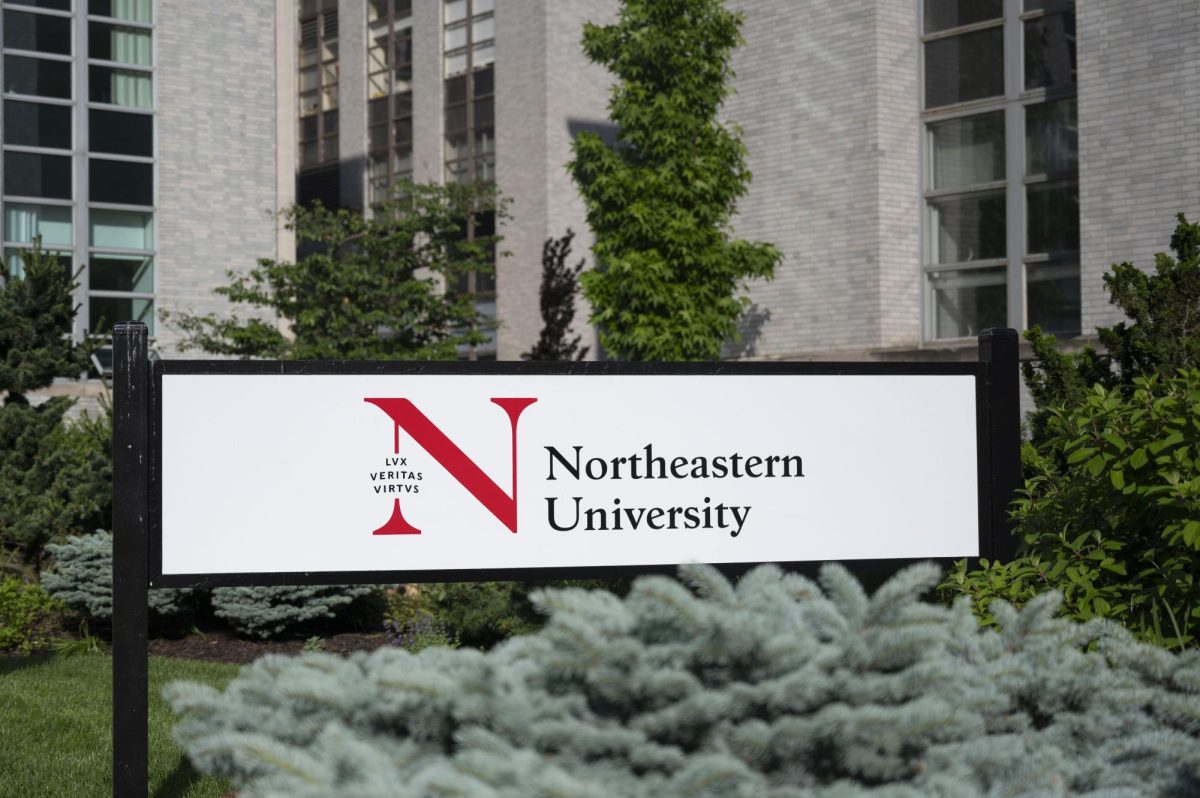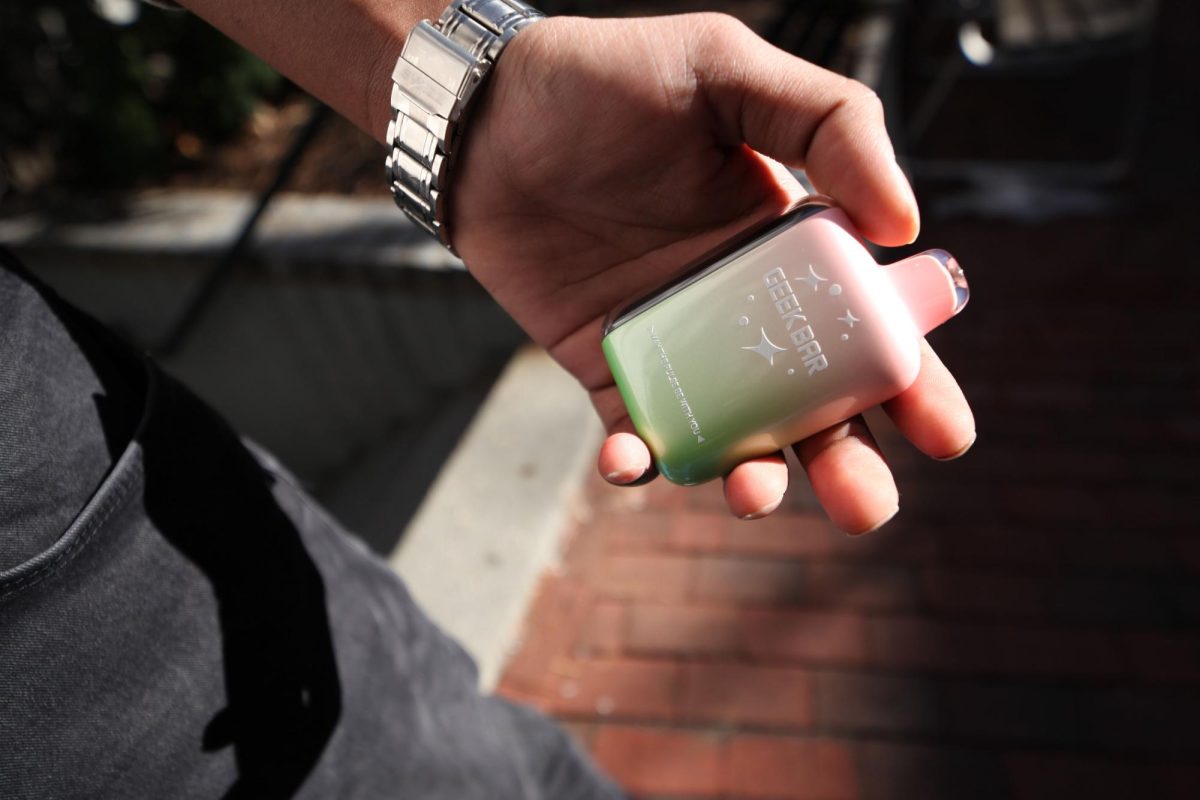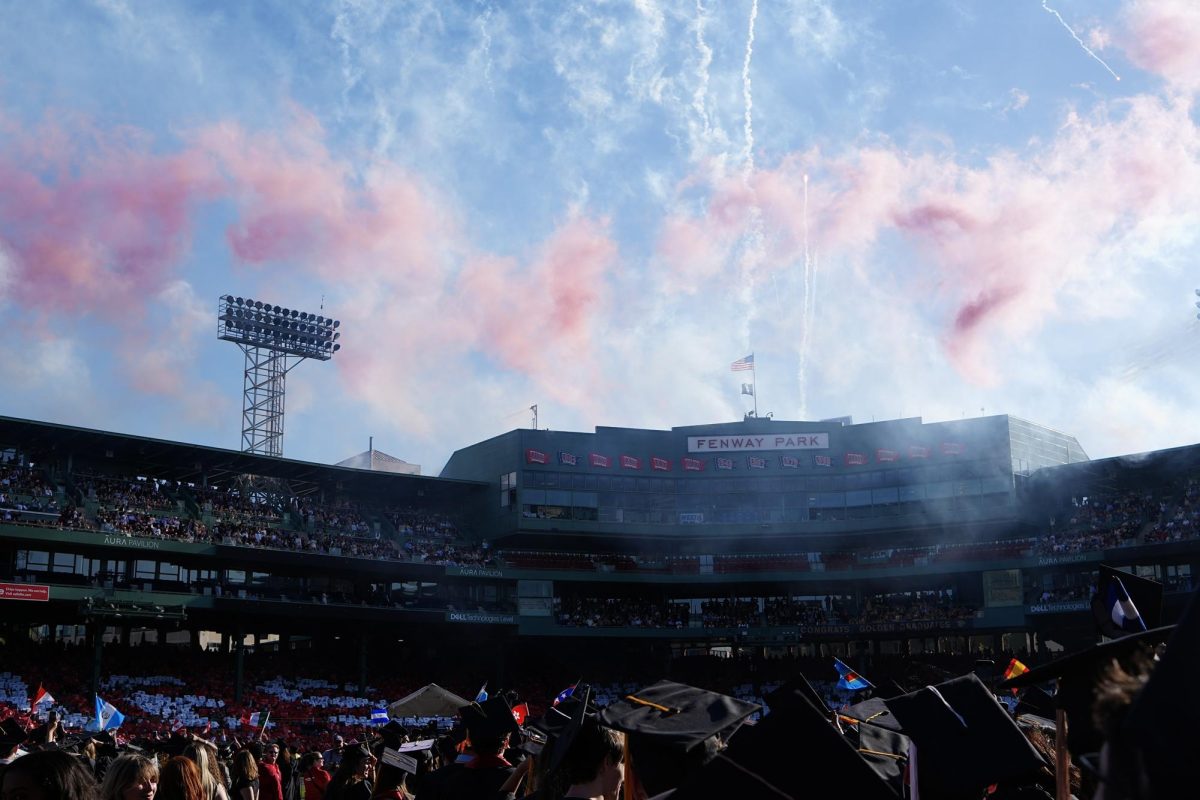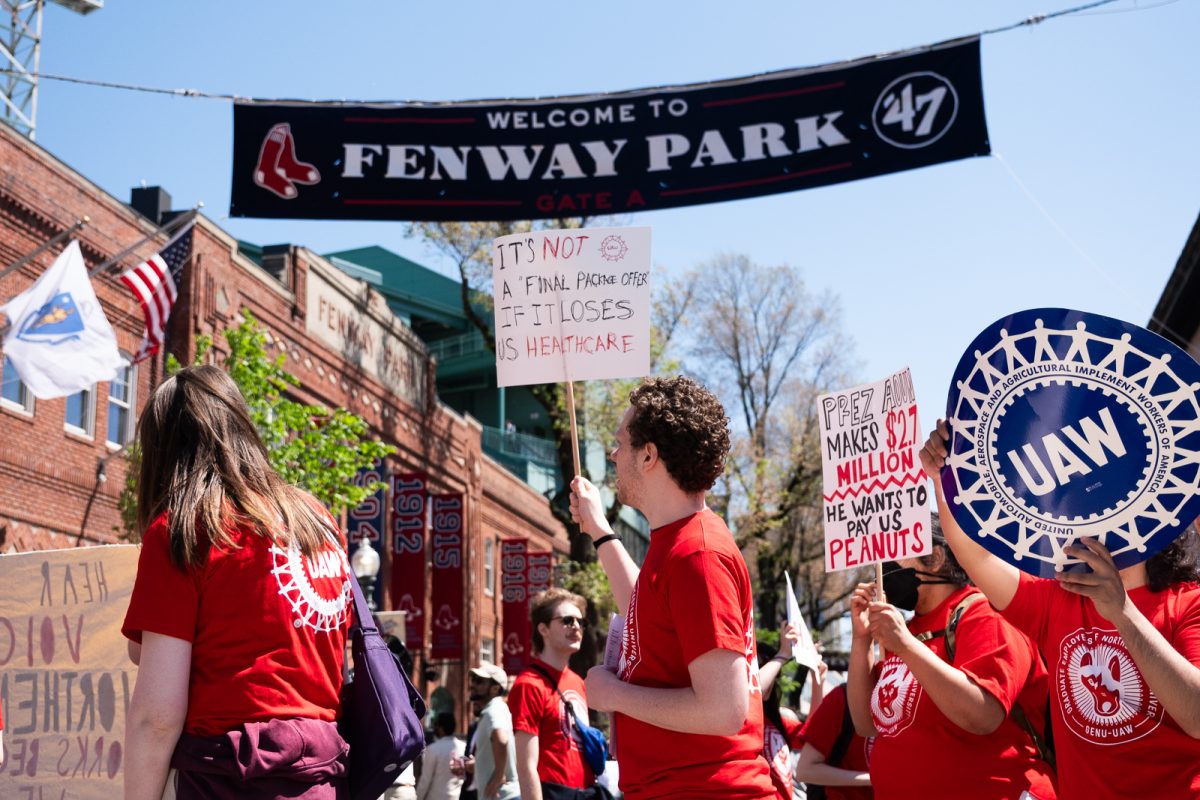By Rachel Morford, news staff
A redesigned pride flag was raised above Centennial Common Oct. 2 in recognition of LGBTQA+ history month. The new flag features brown and black bands above the iconic rainbow stripes to highlight the experiences of people of color within the LGTBQA+ community and will fly alongside the U.S. flag for the duration of what is dubbed ‘OUTober.’
Students and representatives from several campus organizations gathered at 9:30 a.m. to celebrate Northeastern’s first annual Rainbow Flag Raising. Among them was Erica Lezama, a third-year combined economics and business administration major, who spoke to the crowd about the significance of raising the new design.
“This flag is important because it gives me and people who look like me hope,” Lezama said. “Hope that is consistently destroyed whenever we face a microaggression, whenever we are asked to choose between our identities, every time we aren’t heard, every time we are an afterthought and every time we are erased from LGTBQA spaces.”
Although Northeastern’s Student Government Association (SGA) raised a similar flag last year, Student Body President Suchira Sharma said this year’s flag raising is distinct because it was accompanied by an official ceremony, and because the flag will remain mounted for the entire month of October.
“These changes represent a constant evolution of the work that we do at Northeastern to make our environment one that celebrates the identities of all students,” Sharma said in her opening remarks.
Sharma said the redesigned pride flag was another important difference from last year’s raising. The new design first debuted in Philadelphia as part of the city’s “More color, more pride” campaign to combat discrimination within the city’s queer community, LGBT affairs director Amber Hikes said in a June Philadelphia City press release.
Officials from Northeastern’s Social Justice Resource Center suggested that SGA use the new flag design to acknowledge intersectionality on campus, Sharma said. Intersectionality — which refers to the unique identities created by overlapping identities — remained a theme throughout the ceremony, especially when Lezama spoke about her own intersectional identity.
“Being black and being queer at the same time is hard. Going into queer spaces and being able to count the number of minorities on one hand has become my norm, and it’s exhausting,” Lezama said. “Going into black spaces and automatically feeling like I have to hide parts of my identity, to constantly remind people I have come out to that I am queer, and things of the like, is mentally exhausting.”
Lezama, who is president and co-founder of the campus organization Out in Business — a club devoted to cultivating professional confidence in LGBTQA+ students — said raising the new flag sends a powerful message. However, Lezama also said she was disappointed that the redesign was necessary.
“I think it’s great that the Philly flag is being raised, but I also think it says a lot about our community and how much of a problem it is that we have to go to the point [of adding] another stripe to say we’re inclusive to people of color,” Lezama said. “If the flag was including people (of color) from the beginning, we wouldn’t have had to add the extra stripes.”
The LGTBQA+ Resource Center and other organizations are hosting several events throughout the month to celebrate ‘OUTober.’ Two of these events — a screening of the film “Moonlight” and a talk hosted by the John D. O’Bryant African-American Institute called “The Black Queer Experience” — were created with intersectionality in mind, Lezama said.
Kelsey Grunstra, program assistant at Northeastern’s LGBTQA+ Resource Center, spoke at the ceremony about Gilbert Baker, the original pride flag creator who passed away earlier this year. In her speech, Grunstra shared a quotation of Baker’s explaining the flag’s design:
“The rainbow is a part of nature, and you have to be in the right place to see it. It’s beautiful, all of the colors, even the colors you can’t see. That really fit us as a people because we are all of the colors. Our sexuality is all of the colors. We are all the genders, races and ages.”
Grunstra said she felt Baker would approve of the redesign and that the new flag represents potential.
“I think that this is a really great opportunity to reclaim from ourselves this symbol, and turn it into something that is way more powerful,” Grunstra said.
After the ceremony, Sharma said that although raising flag would not eradicate discrimination on campus, it was a sign of progress.
“It is a step closer, not only in celebrating diversity and identity, but in allowing people to see through this visibility their identity represented on campus, and making that campus just a little bit more comfortable for them,” Sharma said. “There’s still a lot of work that needs to be done, and we realize that, but this is a step closer.”


